Text
The Unbelievable Story of the Lost German Dub of Snow White
youtube
Snow White is one of the quintessential German fairy tales, written in 1812 by the Brothers Grimm. The story is well known the world over, largely thanks to the 1937 animated feature film Snow White and the Seven Dwarfs from Disney. Both the story and film shared an enthusiastic fan in Adolf Hitler, the infamous German dictator from 1933 to 1945. Hitler was also a big fan of Walt Disney.
Something virtually unknown today is that in 1938, Disney produced a German dub of Snow White on Hitler's wishes. Though this version wasn't released during the Third Reich, it would be released in Germany following the end of World War II. The cast was made up of uncredited German speakers living in Amsterdam. These weren't just any actors, however, these were some of the finest actors in German cinematic history. They were also Jews living in exile, most of whom would be murdered in the Holocaust.
Today we're going to take a look at the production of the German-language version of Snow White and the Seven Dwarfs, produced for the Third Reich and featuring Jewish actors who would be killed before the film would even see a release. We'll also try to answer the age-old question of Walt Disney's alleged anti-semitism, and if he had mutual respect for Hitler. Was Walt Disney an anti-semite? Let’s find out.

Before we begin we should discuss anti-semitism, so everyone is on the same page. Anti-semitism is commonly defined as hatred or bigotry against Jewish people, but it’s a little more complicated than that. The term anti-semitism was coined as a negative meant to paint European Jews as Semitic, which is an antiquated term for Middle Eastern people. Semites were people who spoke Semitic languages like Hebrew, Arabic, and Aramaic. Most European Jews looked and dressed like other Europeans, but many held onto old-world traditions and customs, so anti-semites would attempt to frame the Jew as an untrustworthy “other” from the East.
Jews were a common target in Europe as they were an extreme minority with their own customs and language, Yiddish, as well as segregation laws that dictated who could conduct what type of business. In the middle ages, Christians weren’t allowed to loan money and collect interest, but Jews could, so many Jewish people took jobs as bankers and tax collectors. This created a deliberate buffer between the wealthy royal elite and the common masses, as Jewish people were the ones collecting taxes for the wealthy, and thus the common people would aim their frustration at those who physically took their money. This legal division that economically coerced Jews into jobs concerning money has led to the stereotype of the “greedy Jew” that persists to this day. This is why it was easy for someone to stand up, declare the Jews to be Germany’s enemy, and have everyone unite against them.


Now back to Walt Disney, he grew up in Kansas City, Missouri as an all-American boy with a paper route. After serving in World War I, Disney started an animation studio in Kansas City before moving to Hollywood. By the mid-1920s he was making a name for himself as one of the top names in animation, and in 1928 he would release Steamboat Willie, the first major sound cartoon starring Mickey Mouse. The success of Steamboat Willie made Disney a household name the world over, including Germany. Disney used his newfound success to expand his animation studio, and would eventually begin production on the first full-color animated feature film Snow White and the Seven Dwarfs.
After the National-Socialists came to power in 1933, Hollywood was still exporting movies to Germany on a regular basis. Many studios like Paramount, Fox, Warner Brothers, and Universal had their own local distribution offices, others signed deals with German studios like UFA or Tobis to release their films. By this point, the goals of the National Socialists were well understood by the international community, and there was global outrage about their treatment of the Jews. In 1935, early in the production of Snow White, Walt Disney, his brother Roy, and their two wives went on a European road trip. One of the reasons for this trip was to sign a new distribution contract with Bavaria Filmkunst AG, as Disney had been sour about their previous deal with UFA. The Disneys didn’t meet with any members of the Reich while in Germany, but they did meet with the family of Benito Mussolini while in Italy.
Production of Snow White was completed and the film was released to unprecedented box office success in 1937. The Ministry of Propaganda in Germany knew they needed Disney to release Snow White, after all, it’s based on a German fairy tale. Propaganda Minister Joseph Goebbels was a well-known film fan, as was Adolf Hitler, both being big fans of Walt Disney. By 1937 most American studios had stopped releasing films in Germany, so the German government and the German film studios worked with Disney to negotiate a deal. Throughout 1938 the Disney company would be in frequent contact with both Bavaria Filmkunst AG and UFA, who were competing for the rights to Snow White.
A total of twelve versions of Snow White were produced for international audiences in 1938, with the German version being the most difficult to iron out. That Spring, while still going back and forth over negotiations, Roy Disney traveled to Amsterdam to oversee the dubbing of Snow White into various European-language versions, as well as a German-language version for when the deal was finalized. Hired to direct the Dutch and German versions was Kurt Gerron, a German Jew living in exile who had been a famous actor and director in Germany before 1933. It’s not currently known if Disney knew he was a Jew who had fled Germany. The simplest explanation is that he was an actor and director who happened to speak German and could do the job.


The production took place at Cinetone Studios in Amsterdam, and the cast of the German version was made up primarily of Jewish exiles like Gerron. Dora Gerson played the Queen, Otto Wallburg played Doc, Kurt Lilien was Grumpy and Sneezy, Siegfried Arno was Happy, and Gerron himself played the Magic Mirror and Bashful.

Dora Gerson was a German-Jewish actress who appeared in German films alongside Bela Lugosi during the silent era. She had been married to director Veit Harlan briefly in the 1920s, Harlan would later go on to direct the anti-semitic propaganda film Jud Süss in 1940. Gerson fled Germany for the Netherlands in 1936, and would eventually be caught and sent to Auschwitz with her husband and two children. The family was murdered at Auschwitz on February 14th, 1943.

Otto Wallburg was a prominent comedian and actor who performed in dozens of movies in the 1920s and 1930s. He appeared alongside Kurt Gerron in the 1931 comedy Bombs on Monte Carlo, also in 1931 he appeared in The Congress Dances, which was an international sensation. He escaped Germany for Austria in 1933, where he continued working in film until fleeing to France and then finally the Netherlands. After the German invasion of the Netherlands in 1940, Wallburg was arrested and sent to the Westerbork transit camp before he was killed at Auschwitz on October 29th, 1944.

Kurt Lilien was an actor who was most active between 1927 and 1933. During this time he appeared in a number of films, including Two Hearts Beat as One starring Lilian Harvey. Lilien also performed in the 1927 silent film The Most Beautiful Legs of Berlin alongside Kurt Gerron. He was killed at the Sobibor Concentration Camp in Poland on May 28th, 1943.

Of those who performed in Snow White, there is no one more historically significant than Kurt Gerron. Unbeknownst to Disney at the time, Gerron had a reputation with the new regime. To international audiences, Gerron was Marlene Dietrich’s manager in The Blue Angel. To the Nazis, Gerron represented the personification of Jewish excess. In his films, Gerron commonly played the part of the Jewish banker, lawyer, or any sort of greedy businessman. His appearance inspired many of the anti-semitic cartoons published in right-wing newspapers of the 1930s, and in 1940 his image would be used disparagingly in the propaganda film The Eternal Jew. Gerron was the image most people had in their heads of what a Jew looked like.
The final film directed by Kurt Gerron, long after his work on Snow White was behind him, was a propaganda film praising the conditions of the concentration camps. The Reich had intended to use his international fame to show the world that Jews weren’t being mistreated in concentration camps. Gerron believed producing the film would save him and his wife, but after the film was finished the two were sent to Auschwitz where they were murdered on October 28th, 1944.


Production on the German dub of Snow White wrapped towards the end of July 1938. Materials were sent from Amsterdam to Hollywood, where the recordings would be synced to the movie itself before release. Deals to release Snow White were already in place for other countries, but Germany was the big one and negotiations were moving slowly. As a show of goodwill, Walt Disney invited German filmmaker Leni Riefenstahl to show her latest film Olympia at the Disney studio. Riefenstahl was controversial, however, as she produced propaganda films for the National-Socialist regime. Olympia was a two-part documentary covering the 1936 Berlin Olympics, and she was preparing to travel to the United States to promote the film.
Riefenstahl’s debut in the United States couldn’t have come at a worse time, and her untimely appearance would do irreparable harm to both Walt Disney’s public image and his lasting legacy. Shortly after Riefenstahl’s arrival, on November 9th, 1938 a deadly anti-semitic pogrom would unfold across Germany. Kristallnacht, or the Night of Broken Glass, was a tipping point for the Holocaust. Jewish businesses were ransacked and destroyed, thousands were attacked and injured, and there were nearly 100 deaths. The international press lit up with reports, it’s said that no other event in Germany between 1933 and 1945 had more significance in the international media.
When informed of what happened, Riefenstahl dismissed the reports as anti-German propaganda. Regardless of how she felt, the American people did not welcome her with open arms. She had planned to visit all of the major Hollywood studios, but in the wake of Kristallnacht, only one would see her: Disney. All of the other studios had pulled out of Germany by this point, but Disney was still hoping to sign the deal for Snow White. Disney personally welcomed Riefenstahl to his studio and showed her production art from Fantasia, but informed her that they wouldn’t be screening her film. All of the projectionists who worked for the studio were part of the projectionist union, who were boycotting Riefenstahl. Disney did his best to salvage the Snow White deal without offending his contemporaries in Hollywood but ultimately failed.
The public had been unaware of the Snow White deal, so when Disney was the only Hollywood studio to welcome Leni Riefenstahl immediately after Kristallnacht the American public had been convinced he was both an anti-semite and a supporter of the Third Reich. Maybe unfortunately for Disney, the deal fell through and Snow White wouldn’t be released in Germany until the 1950s. While it may seem obvious why the deal fell through, releasing a film in Germany post-Kristallnacht would’ve been an international public relations disaster, that might not be the only reason, though.


The Reich Film Archive was the state-owned center dedicated to preserving film, well before film preservation became an important issue in Hollywood. The Germans recognized that they had a very big hand in shaping cinema as an art form, and they made it a priority to preserve it. Following the Soviet invasion of Germany, the Reich Film Archive was seized by Soviet forces. Within the archive was a curiosity, four versions of Snow White, one being the unreleased German version. The Third Reich was in possession of a copy, indicating that Disney got as far as submitting the film for approval before everything fell apart.
So, what happened? That’s the part of the story where things get fuzzy. After Riefenstahl returned to Germany in February 1939, Goebbels put a ban on American media. Snow White would’ve been given special permission, but Disney canceled the release altogether given the political climate. The Reich was in possession of a copy of the film and it was likely screened for Hitler’s inner circle, as it was reportedly one of Hitler’s favorite movies. This begs the question, did Hitler know who the voice actors were? Did Goebbels know the Queen was voiced by the Jewish ex-wife of the director he chose for Jud Süss?
These questions are difficult to answer as it was uncommon for voice actors to be credited in animation at the time, even in the United States. The opening credits of Snow White largely focus on the artists and animators without any mention of the actors. The Reich Film Archive entry for Snow White lists the credits as they appear in the film without a single mention of the German language actors. If Hitler’s inner circle had sat down to watch Snow White after dinner, as they did with a different film each night, and someone were to ask who the actors were there would be no way to immediately answer that question. The only evidence publicly available today are newspaper clippings from the Netherlands announcing the production, as well as a newsletter by a journalist who reported on Jewish actors living in exile.
As mentioned earlier, Hitler and Goebbels were movie buffs who were regular attendees of the cinema. They were well aware of who Kurt Gerron was, and would likely recognize the sound of his voice. Again, Gerron was seen as the personification of negative Jewish stereotypes. It’s likely they would have known of his involvement after watching the film, so what would they have thought of it? No one from The Walt Disney Company has ever publicly spoken about the 1938 German version of Snow White and the Seven Dwarfs featuring a cast of exiled Jews who would be murdered in the Holocaust. It would certainly be a dark secret that any company would want to cover up, but this is a story so obscure that few of those actually involved would be aware of its historical significance. Song of the South this is not.
Neither Walt Disney nor his brother Roy had been aware that Kurt Gerron was Jewish. They had no idea the cast he assembled for the German version had been Jews living in exile. If they did, it’s unlikely they would have hired Gerron, but not out of a direct sense of anti-semitism on Disney’s part. It would have been anti-semitic not to hire Gerron because he was a Jew, but that would be the cost of doing business with the Third Reich.
---
Consider Supporting My Work on Patreon
---
Sources
·“Walt Disney’s European Tour in 1935: Germany, Austria, and Switzerland.” The German Way, 4 May 2020, www.german-way.com/walt-disneys-european-tour-in-1935-germany-austria-and-switzerland.
·Giesen, Rolf, and J. P. Storm. Animation Under the Swastika. Jefferson, North Carolina, McFarland, 2012. ·Prisoner of Paradise. Directed by Malcolm Clarke and Stuart Sender. Menemsha Entertainment, 2002.
·“De Nederlandsche Versie van Walt Disney’s Sneeuwwitje.” Nieuwsblad van Het Noorden, 7 May 1938. ·“Hollands Sneeuwwitje Vóór de Zomer Klaar.” Zaans Volksbad, 19 May 1938, p. 14.
·Snow White Archive. “1938 German Dub of Snow White.” Filmic Light, 19 Nov. 2017, filmic-light.blogspot.com/2017/11/1938-german-dub-of-snow-white.html.
·Doherty, Thomas. “When Leni Riefenstahl Came to Hollywood.” The Hollywood Reporter, 23 Aug. 2021, www.hollywoodreporter.com/movies/movie-features/leni-riefenstahl-hollywood-1235001606.
#snow white and the seven dwarfs#snow white#disney#disney history#film history#animation history#world war 2
19 notes
·
View notes
Text
Brutal Legend (2009) PS3/Xbox 360/PC Retrospective
youtube
Have you ever looked at a heavy metal album cover and wished that you could experience that world? Have you ever wished you could listen to it while fighting demons? Tim Schafer heard your wishes and he delivered them, and he threw Jack Black into the mix as well. The result was Brütal Legend, a heavy-metal-inspired action-adventure game with Real-Time-Strategy elements released for PS3 and Xbox 360 in October 2009.
This project couldn’t have come at a more opportune time, as both the film School of Rock and the massively popular Guitar Hero video game franchise helped bring heavy metal into the forefront of public consciousness. For a brief moment in the late 2000s, it was popular to be into bands your dad listened to. Like Guitar Hero, Brütal Legend’s soundtrack featured a varied mix of guitar-centric subgenres. Popular mainstream bands like Black Sabbath, Motley Crue, and Motorhead would be featured alongside more niche bands like Brocas Helm or Cradle of Filth. It would be hard to make a game about heavy metal music without licensing a few songs, but the wizards at Double Fine made sure all their bases were covered when they licensed over one hundred songs.
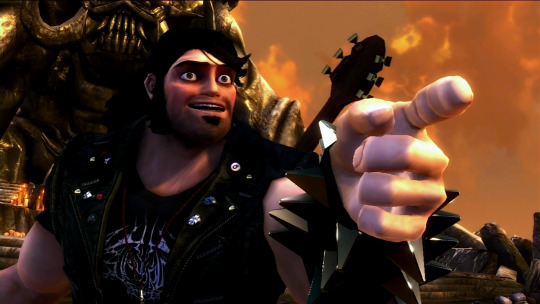
Eddie Riggs, played by Jack Black, is the world's greatest roadie for the world's worst band. An Incredibly skilled and well-organized manager, Eddie hides in the shadows putting together massive rock shows for screaming crowds. A chance encounter with a legendary fire god sends Eddie traveling to another world, one that resembles all of the best album covers. Hot rods, demons, and giant flying shrimp-leeches populate this rich, atmospheric world.
Discovering that humanity has been enslaved by demons, Eddie helps organize an army to start a revolution. Lars Halford is the leader of the resistance, with his sister Lita and their friend Ophelia as the only other members. With Eddie managing the resistance, they’re able to recruit fighters with different skills and abilities to join their army. Emperor Doviculus, voiced by Tim Curry, rules over the world with a sick, leathery fist, while General Lionwhyte serves under him as manager of the human race.
There’s an interesting story of liberation that’s obvious and subtle at the same time. While the plot isn’t hiding the fact that it’s about an underdog rebellion fighting for freedom against tyrannical oppressors, it's presented in a way that ties it more to real-life struggles for liberation than the usual revolutions in pop culture which are vague about their beliefs. The first group Eddie helps liberate are the Headbangers, meaty-necked boys who bang their heads all day to mine for resources as slaves under General Lionwhyte.

The hierarchy is similar to that of any modern job, with the workers carrying out all of the labor, managers ensuring that the workers do their job or face consequences, and General Lionwhyte as the faceless owner who stands to benefit from the unpaid labor of the Headbangers while contributing nothing himself. Doviculus purposely set up a hierarchical system that would keep the humans bickering among themselves, fighting over the meager scraps they’re allowed, while the demons are safe to rule over them. During the Headbanger revolution, one of the characters mentions the workers forming a union to a Bouncer, who becomes angry at the idea. The game isn’t making any profound political statements, but little touches like this bring the fantasy world closer to our own.
Many of the characters Eddie meets along his journey are based on and voiced by real musicians. The flamboyant General Lionwhyte, a parody of 80’s hair metal bands, is voiced by Rob Halford of Judas Priest. Halford also voices The Baron, an ally who appears later in the game and more closely resembles Halford’s real persona than Lionwhyte. Lemmy Kilmister from Motorhead voices the Kill Master, a motorcycle-riding bass player who’s able to revive fallen allies. Ozzy Osbourne takes on the role of the game’s shopkeeper as the Guardian of Metal. Possibly the most over-the-top character, the Guardian sells Eddie upgrades while making sassy comments and elaborating on the world of Brütal Legend. Other cameos include Richard Horvitz, who starred in Schafer’s previous game Psychonauts, and Kyle Gass, Jack Black’s partner in the band Tenacious D.
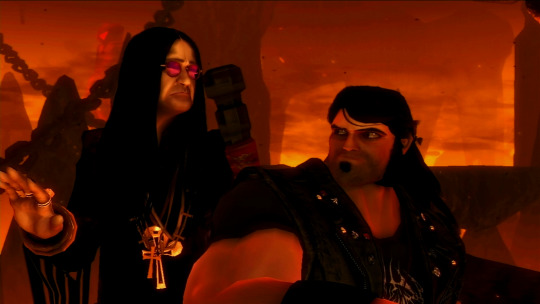
During the marketing campaign leading up to Brütal Legend's release, Electronic Arts made a point to downplay the game's Real-Time-Strategy elements. Instead, the game was presented as more of a straightforward hack-and-slash/action-adventure game. While a lot of the game’s campaign features Eddie going on missions and completing objectives, these missions serve to prepare the player for the game’s battle maps. Each mission introduces a new move Eddie can use or a new ally Eddie can team up with. The objective of these missions involves using the newly introduced move or ally to solve a problem and advance the story.
Eddie carries two weapons at all times: his Battle Axe which acts as a melee weapon for close-range attacks and his guitar Clementine which can summon lightning from a distance. Also at Eddie’s disposal is The Deuce, a hot-rod he assembles himself at the beginning of the game that can be upgraded in the Motor Forge. In between story missions, Eddie can explore and help people with their problems while also uncovering secrets of the world, learning how he fits into it, and finding the reason why he was brought there. Various relics offer guitar tabs, which teach Eddie new moves he can use with his guitar. These moves open up a short Guitar Hero-inspired mini-game where the player taps the controller buttons in rhythm to perform a guitar solo.
The battle maps feature two stages, one for each opposing faction, and several resource geysers that can be claimed by either side. These geysers provide resources that help supply your army with the soldiers and weaponry necessary to win, so most battles boil down to claiming as many geysers as you can while sending troops to the enemy stage. Later battles add obstacles that require strategic thinking, or enemies will come from multiple areas, forcing you to divide your troops.
Director Tim Schafer has said that the game was always supposed to be a Real-Time-Strategy game, inspired by the 1990 Sega Genesis game Herzog Zwei. As development proceeded, Schafer found that the action elements were a lot of fun and decided to shift the game’s focus towards that, while still retaining the RTS battles. It’s likely the developers hoped a strong online community would form around the game’s multiplayer mode, which could justify the story mode feeling like an advanced tutorial. Double Fine released two packs of downloadable content which were meant to expand the game’s multiplayer mode with new maps. Had the game been more successful, there might have been more DLC in the works.

It wouldn’t be right to talk about Brütal Legend without mentioning the game’s music. The game features 107 licensed songs from metal bands across the globe, including genres such as black metal, power metal, classic heavy metal, symphonic death metal, hard rock, and industrial. Bands like Black Sabbath, Quiet Riot, Judas Priest, Mastodon, Cradle of Filth, Slayer, and more fill the soundtrack with an authentic sound that would make any metal fan happy. Licensed songs pop in at perfect needle drop moments, such as Brocas Helm’s Cry of the Banshee playing during the boss battle with the Metal Queen.
The game also boasts a robust score composed by Peter McConnell featuring a full orchestra and a heavy metal band to seamlessly blend with the licensed music. McConnell previously collaborated with Tim Schafer on the soundtracks for Grim Fandango and Psychonauts. Judas Priest guitarists Glenn Tipton and K.K. Downing provided the guitar solos played by the characters in the game. To promote the game, a DLC music pack was released for the game Rock Band, which was also published by EA, featuring Motorhead, Tenacious D, and Testament.
Despite a massive marketing campaign involving the game’s star Jack Black centered on a “Rocktober 13th” release date, Brütal Legend was not a massive success for Electronic Arts. The game had only sold a quarter of a million copies across both Xbox 360 and PS3 during its first month of release but was successful with critics and those who played it. Many players were confused and upset by the Real-Time-Strategy elements, more specifically they felt they had been deceived by EA’s marketing. Three weeks before the game’s launch a demo was released that featured the first playable mission. No elements of the strategy side of the game were present, leading players to assume it was a hack-and-slash adventure game.
Since its initial release, the game has gone on to become a cult classic. The sharp wit of the writing mixed with Jack Black’s personality, and the fun gameplay of Double Fine ensured this game would age well. In February 2013, four years after the game’s launch on PS3 and Xbox 360, Brütal Legend would finally come to PC. DoubleFine worked out a deal with EA that saw them receive complete ownership of the game, enabling them to release it on Steam with minor tweaks and bug fixes. The game is also available on Xbox One and Xbox Series X through backward compatibility and is available for free to subscribers of Xbox Game Pass.

Brütal Legend is a fantastic game with a rich, illustrious world to explore that too many people missed out on when it first came out. Some may be turned off by its seemingly overwhelming Real-Time Strategy gameplay, but the game does a good enough job explaining how everything works that even newcomers to the genre should feel comfortable. While a sequel is unlikely, Brütal Legend will stand the test of time as one of the last great games of the 2000’s, and a fitting conclusion to the Guitar Hero/Rock Band craze that was petering out as Brütal Legend was released.
Where to Buy
PS3, Xbox 360, Steam (PC)
The Art of Brutal Legend
Digital Soundtrack
Support Y2K FunZone on Patreon

0 notes
Text
Brief Thoughts on the Sonic the Hedgehog Movie
youtube
Trying something new with this, I don’t want to make a habit of it, but since I’ve fallen behind on uploading video essays I’ll do a blog post about the Sonic movie. Since there’s no video to go with this, I uploaded a play through of the promotional movie content in the mobile game Sonic Dash. More video essays are coming, the entire Every Sonic Ever series has been written with gameplay footage recorded. I’m hoping to finish the Classic Era within the next month.
Anyways, let’s talk a little about the Sonic movie. I’m going to try my best to avoid spoilers, but if you haven’t seen it yet then it’s worth checking out.

What can I say other than I loved it? Maybe love is a bit too far, I definitely enjoyed it more than I thought I would though. I’m trying to hold myself back from going too far into detail because I do have a real video essay planned for the Sonic movie, but it was a nice surprise. I would go as far as to say I would welcome the idea of the Sonic movie canon taking over as the main canon for the Sonic franchise.
The movie follows the basic premise of Sonic being a creature from another world who somehow winds up on Earth. Sonic’s home world closely resembles his world in the games, specifically Green Hill Zone from Sonic Generations. On Earth, Dr. Robotnik is investigating a mysterious energy blast when he discovers Sonic. Witnessing Sonic’s abilities, Robotnik decides to capture him with the hope of harnessing his power for himself.
The story is pretty basic, but the characters are what really sell it. Sonic was sent to Earth as a baby in order to hide from anyone looking to claim his power for their own uses. He spends ten years living alone and avoiding detection, gorging himself on American pop culture while longing for friendship. He’s like an energetic kid who’s eager to impress everyone. That doesn’t sound like Sonic at all though, does it? Actually, it smells like character development. Over the course of the movie Sonic goes from a vulnerable kid who hides his feelings with a sarcastic attitude to the confident hero we know from the game.

They do the same with Dr. Robotnik, and yes they do call him Robotnik in the movie. Of course you already know about the Eggman/Robotnik name issue, he was Eggman in Japan and Robotnik in the West in the 90′s, then he became Eggman everywhere in the 2000′s. They take the Sonic Adventure route here, with Dr. Robotnik being his real name and “Eggman” being a nickname Sonic gives him. Dr. Robotnik starts off as an eccentric, but successful government scientist who starts going crazy after being unable to capture Sonic.
The cast were surprisingly great, Ben Schwarz had a great energy to his performance as the voice of Sonic, and the ever wonderful Jim Carrey channeled his 90′s persona as Robotnik. Being this is a kids movie about a talking cartoon hedgehog in the real world, there would of course be unnecessary human characters to connect the cartoons to the culture of whatever year the movie takes place in. Often the human character’s story would get in the way of the title character’s plot, my fear was that Sonic would be a secondary character in his own movie.
Fortunately the human stuff was brief and moved along at a brisk pace, serving its purpose to get us from one part of the story to the next and adding a little emotional element to the movie. Surprisingly enough, I actually enjoyed the human characters. They had great chemistry with one another, and especially with Sonic, to the point where it really sold the idea that Sonic was a real person in the room.
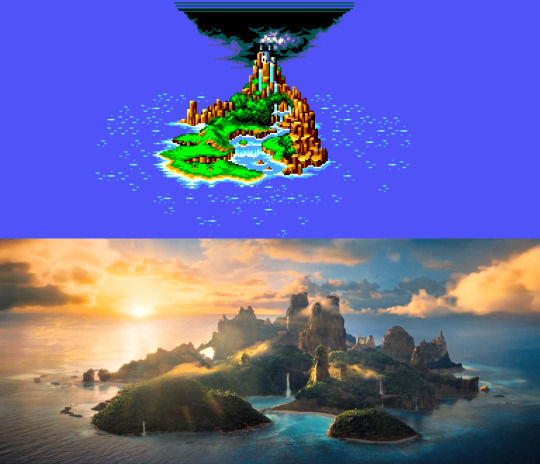
The fan-servicey stuff made me happy, it was nice to see the Sega Saturn logo on Sonic’s map of the universe. There were some deep cuts, like Sonic’s island looking exactly like the map of South Island from the Game Gear version of Sonic 1. Then there were the obvious references like Sonic eating chili dogs, the town being called Green Hills, and Sonic’s ping pong table being a sign for Hill Top. I gotta admit I was smiling through the whole movie at the little details like those.
The most important thing I have to mention is that the audience at my local theater was made up mostly of families with young kids, as well as a group in the front row that seemed to all be video game fans. Everyone in the theater was pretty unanimous on the movie, laughing at all the right moments, gasping at the big reveals, one kid got really excited about the Sonic Mania theme at the beginning of the movie. I’ve read other accounts of kids going crazy for the movie at every showing, they all loved it. I’m glad that the video game I liked as a kid is still making kids happy today.
If the box office numbers are anything to go by I’d say we’re going to be seeing a sequel sooner rather than later. I’m really happy that the movie was a hit because it could be the shot in the arm the franchise has so desperately needed since Sonic Generations came out. Hopefully the sequel is good, after the ending of this movie I’m confident the sequel’s in good hands.
Give Me Your Lunch Money, Nerd

0 notes
Text
Sonic Jam - 1997 Sega Saturn Retrospective
youtube
The legendary Sega Saturn, more like legendary blunder. It should’ve been able to compete with the Sony PlayStation and Nintendo 64, however it was missing one crucial thing - a killer app. Sega had crushed Nintendo at the start of the 90′s by bundling the Sega Genesis with Sonic the Hedgehog, but they didn’t have a Sonic game ready for the Saturn. Sonic X-Treme was supposed to be the Saturn’s killer app in the Fall of 1997, but it had been canceled at the last minute.
To fill the gap created by the lack of a Sonic game for the Saturn during the 1997 Holiday season, Sega commissioned Traveler's Tales to port Sonic 3D Blast to the Saturn for a simultaneous release with the Genesis version, as well as a racing game called Sonic R that originally had nothing to do with Sonic. Back in Japan, Sonic Team were working on what would eventually become Sonic Adventure for the Dreamcast. They also helped fill the gap by porting the four Sonic games for the Sega Genesis to the Sega Saturn in a compilation called Sonic Jam.

Sonic Jam was released in the Summer of 1997, the second Sonic title released for the Saturn and the first Saturn exclusive. While Sonic Jam is primarily a compilation of the then-released main series Sonic the Hedgehog games, it also includes a 3D hub world called Sonic World. The stage is something of a playground where the player can experience what a fully 3D Sonic game might be like.
The Sonic World section of the game is actually based on an early version of the Sonic Adventure engine. Originally, Sonic Adventure was designed as an adventure RPG for the Sega Saturn. With the Saturn’s demise coming sooner than later, Sonic Team decided to move the project to the Sega Dreamcast.
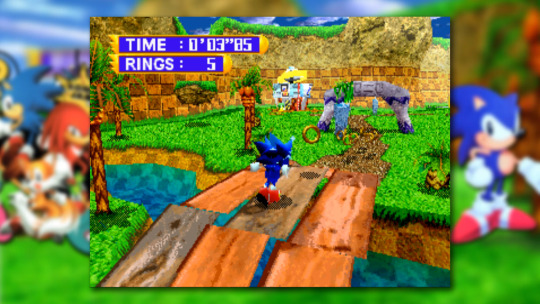
Sonic World is based on the design of Green Hill Zone from Sonic 1, and includes many mainstays of the Sonic series like springs, floating platforms, rings, and badniks. Tails can be found flying around the level, you can grab onto him and he’ll give you a bird’s eye view of the stage. There’s a button at the start of the stage that’ll assign you timed missions to complete, as well as various buildings like a movie theater where you can watch Japanese commercials for various Sonic games and projects.
The commercials are amusing, but the real treasures here are the never-before-seen materials. A special animated short called Sonic - Man of the Year was included with Sonic Jam, with no firm explanation of where it came from or what it was intended for. There’s also a CG short called Sonic Ride that’s featured here in full, and presumably would’ve been part of a mechanical arcade kiddie ride.
As interesting as Sonic World is, after an hour you’ve seen pretty much everything there is to see. This is the extent to the original content in Sonic Jam. This is where my interest in Sonic Jam ends, and that’s not Sonic Jam’s fault. When the game came out in 1997 the only way you could play the original Genesis games was by owning a Sega Genesis.

As of 2019 we’ve had more ports, re-releases, and remasters of the original Genesis games than I care to count. Some have been very good, while some have been very bad, but for the most part you can buy all of the classic Sonic games on virtually any device. Because of this, Sonic Jam’s ports aren’t very interesting in retrospect. Compilations are never really exciting to look back on unless they really add something worth talking about.
Thankfully, Jam got it right and is worth talking about. These are ports of the original games updated for the Saturn’s hardware from the original source code, something I don’t think we’ve seen happen again since. Every re-release since Sonic Jam has been emulation based or rebuilt from the ground up.
Unlike later collections which present the games in their original versions exclusively, Sonic Jam includes bonus “easy” and “normal” modes that fix elements of the original games to make them easier or less frustrating. The original games are there, but these modes add new way to play the games. This is also the first time we’ve seen the spindash added to Sonic 1, which has become a running trend for a lot of more recent releases of the game.

Having just played through all of the original Sonic games, I wasn’t about to play them all again. With that said, there are better ways to play the classic games. Sonic World is a cool feature but all of the extra content can easily be found online and the 3D stage itself isn’t particularly impressive 20 years later. Its definitely worth playing for Sonic fans, and I’d say Sonic Jam is a must have for any Saturn collection, but its not something I would actively seek out on it’s own.
Support Y2K FunZone on Patreon
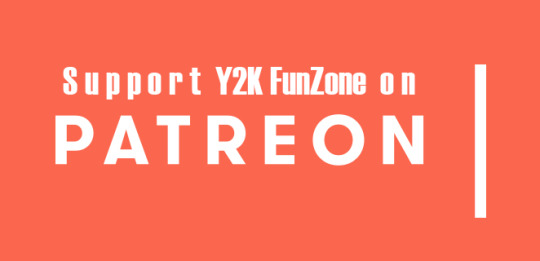
#Sonic Jam#Sonic the Hedgehog#Sonic#Sega#Sega Saturn#Sega Genesis#Sega Dreamcast#Sonic Adventure#Sonic the Hedgehog 2#sonic the hedgehog 3#Sonic & Knuckles#Sonic World#Video Games
0 notes
Text
Sonic 3D Blast - 1996 Sega Genesis/Sega Saturn Retrospective
youtube
After Sonic & Knuckles launched in 1994, the original Sonic Team decided to hang up the towel on Sonic for a while. Sonic Team leader Yuji Naka wanted to return to Japan and explore new ideas for the Sega Saturn, but Sega still wanted more Sonic games. While Naka and Sonic Team worked on what would become NiGHTs into Dreams, Sega put plans into action for new Sonic titles for all of their consoles.
Sega’s in-house studio Sega Technical Institute, which was responsible for previous main line Sonic games and spin-offs, would handle Sonic X-Treme for the Sega Saturn. Traveller’s Tales, a British studio, were hired to produce an isometric Sonic game for the Sega Genesis to be released alongside X-Treme. When Sonic X-Treme was cancelled late in the game, Sega asked Traveller’s Tales to port 3D Blast to the Sega Saturn. What was supposed to be a spin-off game now graduated to a main Holiday release for Sega.
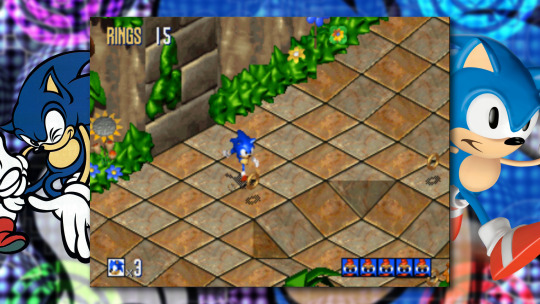
Sonic 3D Blast was released for the Sega Genesis in November 1996, with the Saturn version following in early 1997. The game was released exclusively in North America and Europe, until 1999 when the Saturn version was released in Japan alongside the International version of Sonic Adventure for Dreamcast. The game was promoted with a Christmas special called Sonic Christmas Blast, which was originally meant to promote Sonic X-Treme and was called “An X-Tremely Sonic Christmas” originally.
For the most part the Genesis and Saturn versions are the same game with the same levels. The first thing you’ll notice is that the Saturn version has a bigger CGI opening scene, as well as higher resolution graphics. The game’s art style was made in the same pre-rendered computer graphics that brought Donkey Kong Country to life. The Sega Saturn allows for more detailed character graphics and backgrounds, as well as weather effects.
Of course the Saturn version is fondly remembered for it’s Special Stage, a 3D recreation of the half-pipe from Sonic 2 with low-poly models of Sonic, Tails, and Knuckles. This would be the first time Sonic would appear as a full 3D model instead of as a pre-rendered 3D image. These stages were developed by Sonic Team in Japan, lending a hand in the last minute shuffle after X-Treme’s cancellation.

The game puts a psuedo-3D pre-rendered Sonic into pseudo-3D isometric stages. Why do I say pseudo? Because the game isn’t actually in 3D. The game’s marketing emphasized the pre-rendered graphics and isometric play field relative to the 2D side-scrolling perspective of earlier games. 3D Blast was also up against Super Mario 64, so Sega was selling the idea to parents that a Super Mario 64 sized adventure was possible on older hardware. This, of course, isn’t exactly true.
Sega had a big presence at E3 1996 where they had their 3 major Sonic titles for the Holiday season on display. Sonic X-Treme for the Saturn, and Sonic Blast for the Sega Genesis and Game Gear. At this point they weren’t using the term 3D, and they were marketing both games with the same title. The Game Gear game Sonic Blast is largely unrelated from Sonic 3D Blast, as all Game Gear games that share a title with a Genesis game tend to be.
Sonic 3D Blast feels like a Sonic game from a different perspective, except instead of running through a stage and reaching a designated goal now Sonic has to collect Flickies and deliver them to a Goal Ring in the area. Each Flicky is contained within one of Robotnik’s robots, so Sonic has to destroy all the robots and lead all the Flickies to the goal. This is the sole focus of the game, and a major source of frustration for players.

When you release a Flicky it’ll follow you, and is then susceptible to the same dangers you are. If Sonic gets attacked the Flickies scatter in different directions, often going into areas Sonic can’t normally reach like in the Volcano stage. This combined with the game’s slippery controls make precise movement difficult, thus leaving the player open to mistakes. While there’s a degree of challenge to the game, most of the obstacles are more frustrating than difficult.
In 2017 Jon Burton, lead programmer for Sonic 3D Blast, released a free patch for the Genesis version of the game that fixes the game’s slippery controls, as well as adding a password save system, a time attack mode, and Super Sonic as a playable transformation. Burton made this update in his spare time, calling it a Director’s Cut. This marked the first time a Sonic game had a semi-official ROM hack from one of it’s original developers.
Sonic 3D Blast marked a low point in Sonic history, being the only mainline game released between Sonic & Knuckles in 1994 and Sonic Adventure in 1998. Even though it wasn’t intended to be a main series game, it was still marketed as such so for the purposes of this essay I’ll refer to it as one. I think if Sonic X-Treme had been released, 3D Blast would’ve been held in higher regard.
Support Y2K FunZone on Patreon

#Sonic#Sonic the Hedgehog#Sonic 3D Blast#Sonic 3D Flickies Island#Sonic 3D#Sega#Sega Saturn#Sega Genesis#Sega Mega Drive#Every Sonic Ever
2 notes
·
View notes
Text
Sonic the Hedgehog Edutainment Games
youtube
Ah, video games. Nothing was better as a kid then running home from school, forgetting everything you learned that day, and diving into some video games. That is unless your parents were fools who fell for the ruse of “Edutainment” video games. What is “edutainment?” you might be wondering? Its a combination of the words “Educational” and “Entertainment”, and usually winds up being neither.
These games are designed to ease the minds of parents fraught with distress over reports of children being corrupted by video games. After all, in the 80′s arcades were seen as seedy places where gangs hung out, and the 90′s had the congressional hearings over sex and violence in video games. Edutainment games weren’t meant to replace “mature” games, but rather level the playing field and show that games could be more than what they were.
While Nintendo’s dabbled with educational games before, Sega really lead the market in the 90′s with their Sega Pico, a console designed specifically for younger gamers. Their Sega PC line of games for Windows also included notable educational titles. Of course none of this would happen without our blue friend Sonic the Hedgehog.

Sonic’s Edusoft
I wanna get this one out of the way first, even though its not actually a game its still worth talking about. Sonic’s Edusoft was a pitch by Tiertex, a British studio who developed numerous games for both the Master System and Game Gear. The game is only a prototype, possibly cobbled together to pitch to Sega, who ultimately passed on the idea.
The prototype had impressive visuals, with graphics that resembled the original Sega Genesis game. Sonic’s Edusoft features an isometric overworld where the player can guide Sonic to each event. Most events consist of simple math or spelling problems, with Sonic racing against badniks and little animals to see who can solve them faster. The game’s pretty repetitive, and the mini-games are broken. Had Edusoft been given the go-ahead, I’m sure the wrinkles would’ve been ironed out.

Sonic the Hedgehog’s Game World
Sonic the Hedgehog’s Game World was released in August of 1994 for the Sega Pico. The game is a collection of mini-games featuring Sonic, Tails, Amy, and Dr. Robotnik, and is the first game to feature voices for Tails and Amy. This game and the following are both for the Sega Pico, a console for preschool age kids that didn’t have a standard controller. Instead, it used a touch pad with a special tethered touch pen, as well as several colored buttons on the console itself. Cartridges included storybook-like pages that the player can flip to take them to different areas.
Sonic’s Game World doesn’t have much educational value to it, being mostly a series of mini-games. The plot puts Sonic, Tails, Amy, Dr. Robotnik, and the little animals into a family fun center inspired space. Each floor has a different set of games like hoops or car race. The final page, like all Pico games, features a Sonic themed art studio where players can free draw.

Tails and the Music Maker
Tails and the Music Maker was released in October of 1994 for the Sega Pico. The focus of the game is to teach kids about music and instruments with Sonic’s favorite little buddy Tails. This game’s another Sega Pico mini-game collection, which is likely why the Pico isn’t popular even among retro collectors. There really aren’t any Gunstar Heroes or Monster World IV type experiences, no cult classics to speak of, unless you’re a die-hard Sonic fan who needs these games.
Anyways, this is one of the rare American produced Sonic games. Tails’s design in the game is lifted straight from the Adventures of Sonic the Hedgehog cartoon series. The game features all sorts of public domain classical music, and at the end you even get to see Sonic.

Sonic’s Schoolhouse
Sonic’s Schoolhouse remains the single greatest oddity in the Sonic the Hedgehog franchise. It was released for Windows PCs in October of 1996, Sonic guides players through his school where the player can answer questions pertaining to school topics, as well as play mini-games. Educational games just love to throw mini-games at you.
The game itself feels like a re-skin of Wolfenstein 3D, or an interactive version of the Windows 95 hallway maze screensaver. Schoolhouse is also notable for using assets from the canceled Sega Saturn game Sonic X-Treme. Sonic’s character animations were recycled from the canceled game for Schoolhouse, its possible the games were meant to be released together.
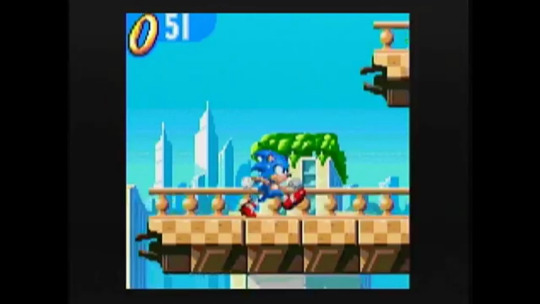
Sega’s educational video games were more popular in Japan than anywhere else. The Pico was widely celebrated by American parenting magazines as a great toy for young children, but for whatever reason it didn’t take off the way it did in Japan. The Japanese public embraced the Pico, and the console would receive support until the mid-2000′s. The Pico even received games from rival company Nintendo’s Pokemon franchise.
Sega took a different approach to educational games in the 2000′s by forming a partnership with Leapfrog. This deal resulted in two Sonic games released exclusively for the Leapster and Didj handheld consoles. One of the two games was based on the hit anime series Sonic X, while the other is a generic educational game featuring graphics from Sonic 1.
Footage Credits
Sonic GameWorld, Tails and the Music Maker, and Pokemon on Pico - Cabbusses's Retro Obscurities
Sonic's Schoolhouse - NintendoComplete
Sonic X for Leapster - RescueHero's Nostalgia Zone
Support Y2K FunZone on Patreon

#Sonic the Hedgehog#Sonic#Edutainment#Educational Games#Sega Pico#Sonic's Edusoft#Sonic the Hedgehog's GameWorld#Tails and the Music Maker#Sonic's Schoolhouse#Sonic X#Sonic Leapster#Tails#Amy Rose#Dr. Robotnik
0 notes
Text
Knuckles’ Chaotix - 1995 Sega 32X Retrospective
youtube
In the 90′s Sega just couldn’t get past the idea of add-on peripherals for the Sega Genesis, despite repeated failures. As discussed in the Sonic CD retrospective, Sega had previously tried a CD based add-on that could breathe new life into the Sega Genesis, if only any one could afford it.
In 1995, Sega decided to try again with the Sega 32X, a mushroom-like add-on that gave the Genesis the power to rival the newer consoles like the Sony PlayStation and Sega’s own Saturn. You can probably guess that the story doesn’t end well for the 32X, but we did get a solid Sonic game out of it. Well, more of a spin-off game.

Knuckles Chaotix was released in March of 1995 alongside the 32X add-on, the first Sonic spin-off to feature Knuckles as the lead. The game introduces several new characters, including Vector the Crocodile, Espio the Chameleon, and Charmy Bee, and it reintroduces Mighty the Armadillo from SegaSonic the Hedgehog.
The game is based on the standard Sonic formula, a side-scrolling platformer with an emphasis on speedy pinball physics, but Chaotix adds its own spin: the player controls two characters connected by ring energy. Similar to how Tails would follow the player in previous games, now the player can pick a support character to help them slingshot around stages. This is an interesting game mechanic that can be as fun as it is frustrating.
The stages are the most colorful in the history of Sonic games, with less of the blues and greens used in standard Sonic games and more purples and yellows. Each stage has its own theme and gimmicks, as is common in Sonic games, but instead of playing through them in a linear fashion the stages are random. This keeps the game fresh, but instead of the two-act formula levels now have five acts.

Much like Sonic CD, Knuckles Chaotix didn’t have the opportunity to accumulate a fan-base due to the 32X’s low sales. Sonic CD has seen a handful of releases, but Knuckles Chaotix has only ever seen one official re-release as part of the subscription-based service GameTap. Because of this, its been an elusive treasure to fans too young to have experienced it in 1995.
For fans who were there at launch, it was more of a disappointment than anything. Appreciation for it has grown in the years since, but when it came out there were numerous issues with the 32X device itself. Many households couldn’t get the 32X to work with their Genesis consoles. Within the year Sega stopped supporting the add-on entirely, leaving a bad taste in the mouths of fans everywhere.
This is all completely unfair to Knuckles Chaotix, the game itself is a perfectly fine and competent spin-off that’s been forever tarnished by its reputation as the only Sonic game holding up the 32X. Fans expected a follow-up to the previous year’s Sonic 3 and Sonic & Knuckles, Chaotix was not that by a long shot. Maybe if the fabled Sonic Mars had come to fruition it would’ve taken the heat off Chaotix.

Knuckles Chaotix is one of the best looking and best sounding Sonic games of the 90′s. The art style is fantastic, the colors are vibrant and exciting, and the soundtrack is one of the best in the entire series. None of this stops the game from being a mediocre package overall. I’d like to see it get re-released someday, but I doubt it’ll happen any time soon. The game is simply more novelty than something worth playing through to the end.
Support Y2K FunZone on Patreon

#Knuckles Chaotix#Knuckles the Echidna#Sonic the Hedgehog#Sega 32X#Sega Genesis#Sega Mega Drive#Sega Saturn#Sega Dreamcast#espio the chameleon#charmy bee#vector the crocodile#mighty the armadillo#video games
1 note
·
View note
Text
Tails Game Gear Spin-Offs - Tails SkyPatrol/Tails Adventure
youtube
C’mon now, let’s be honest, who among us doesn’t absolutely love Tails? Sonic’s two-tailed fox friend who follows him around on his adventures and can use his tails to fly like a helicopter. How could you not love him? Sega knew that the little fox had his admirers, so they did what any good corporation would do in the pursuit of wealth: give the character his own leading titles.
Joining Dr. Robotnik, and soon to be followed by Knuckles and Shadow, Tails leaves his mark on the Sonic franchise with not one, but two dedicated games made exclusively for the Sega Game Gear. Do they hold up? Let’s take a gander.

Tails SkyPatrol
Tails SkyPatrol was released for the Sega Game Gear exclusively in Japan in April of 1995. The game is an on-rails adventure game where you take to the skies as Tails, who can throw his boomerang ring at enemies and obstacles, but can’t touch the ground or the side of any structures. Tails is the only Sonic character to appear in the game, with the enemies and bosses being original creations by the development team.
The game seems to be aimed at a younger audience than standard Sonic games, yet its more difficult than most Sonic games. The game starts you off in a Training Zone where you can practice all the moves, but this is really just a short introduction stage and you will die your first few times playing it. After the Training Zone stages become much longer and more challenging.
There’s been some speculation that this game may have started as a Mickey Mouse game. A poster on the Sonic Retro message board pointed out an early version of SkyPatrol where the Bearenger boss looks like Disney’s Pete. While the Mickey Mouse connection wasn’t implied, Alice Kagamino, a developer who worked on the game, did confirm in a Twitter thread that the game wasn’t originally a Sonic game.
According to them the game started life as a proposed launch title for an unannounced handheld console. The system would be similar to the Game Gear, so they developed for the Game Gear with the idea to port it to the new console when possible. The new console never happened, so the game was instead released for the Game Gear as Tails SkyPatrol.
A new version of the game was produced for the GameBoy Color, without the Sonic license of course, now known as Boon Boon Kabun. The game was finished, however it would never be released publicly.

Tails Adventure
Tails Adventure was released for the Sega Game Gear worldwide in September of 1995, with a US release following that November. Another departure from the Sonic formula, Tails Adventure is a side-scrolling adventure game with RPG elements. Tails can walk, jump, and fly, as well as use items such as bombs to attack enemies and break obstacles.
There’s conflicting versions of the game’s story, with the Japanese version taking place before Sonic met Tails and the English version happening after Sonic 3 & Knuckles. At the start of the game Tails is just plain cold chillin’ on the Cocoa Island when an invading army of Battle Kuku’s show up and set the island on fire. The Battle Kuku’s look like duck versions of Metal Sonic and its creepy and makes me uncomfortable.
Like Tails’ SkyPatrol before it, Tails Adventure is a needlessly difficult game. I don’t know if it’s just a Game Gear problem or what, but for some reason all of these Game Gear games are incredibly difficult. Maybe I’m just a big baby and need to get good at video games, or maybe the small screen and limited capabilities made for more challenging games.

Neither games really feel like they’re building on the world of Sonic the Hedgehog in any meaningful way. One could easily remove Tails from both games and put another character in his place and the games would still make sense. Regardless, these games are fun and are probably the best Sonic-related games for the Game Gear.
As much as I love the titles that try to match what the Genesis games of the day were doing, I’m more fond of original ideas like these. While Sonic might not be able to star in a slower-paced adventure RPG, Tails easily could take the lead and help establish other gameplay styles within the Sonic franchise. Unfortunately we haven’t had a Tails-centric game since 1995, but I wouldn’t be against the two-tailed fox getting his own game again.
Support Y2K FunZone on Patreon

0 notes
Text
Sonic Game Gear Spin-Offs - Sonic Drift/Sonic Labyrinth
youtube
Sega’s Game Gear wasn’t nearly as successful as it’s chief competitor, Nintendo’s GameBoy, was, but you wouldn’t know that looking at all the Sonic games released for the system. The Game Gear actually had more Sonic games than the Sega Genesis did, the Game Gear had 12 games while the Genesis only had 7.
Today let’s take a look at some more classic spin-off games, this time from the Game Gear era. While Sonic Spinball and Dr. Robotnik’s Mean Bean Machine did have Game Gear ports, we’re going to focus on original titles exclusive to the Game Gear. We’re also going to finally answer the mystery of why Sonic needs to drive a car.

Sonic Drift/Sonic Drift 2
Sonic Drift and Sonic Drift 2 are a pair of racing games released in 1994 and 1995 respectively for the Game Gear. The original Sonic Drift was released exclusively in Japan, while Sonic Drift 2 was later released worldwide. All things considered they’re basically the same game, though Drift 2 has more characters.
Gameplay is similar to earlier Sega racing games Hang On and Outrun, with the screen layout seemingly inspired by Super Mario Kart. The first game was four characters: Sonic, Tails, Amy, and Eggman, while the second adds Knuckles, Metal Sonic, and Fang the Sniper from Sonic Triple Trouble. The second game also comes with 18 tracks compared to the first game’s 6.
As the cover and title would both suggest, Sonic and friends drive cars in these games. This leads clueless fans to wonder why the fastest hedgehog in the world would ever drive a car. This question comes up every time a new Sonic racing game comes out, and it never stops annoying me.
The reason Sonic drives a car in racing games is because why wouldn’t he? Driving cars is fun and helps make it an even race for even the slowest of Eggmen. When you’re a blue hedgehog who can run faster than the speed of sound, wouldn’t racing kind of be pointless? Even from a business perspective, it just makes sense to make a mascot kart racer out of a series who’s main character loves going fast.
Sonic Drift is a little light on content, which is likely why Sega kept it as a Japan exclusive. The sequel features much more content, with almost double the amount of characters and many more tracks. They’re great throwbacks to the Sega arcade games of the 80′s, and the second one should be a staple of any fan’s Game Gear library.
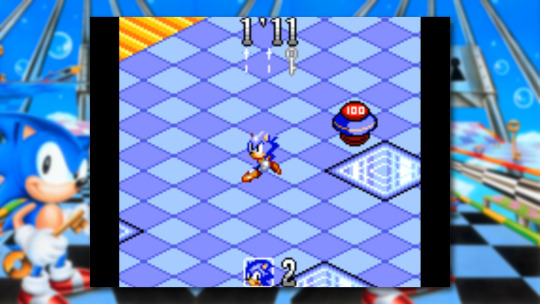
Sonic Labyrinth
I really don’t have much to say about this next game, its probably one of the most baffling Sonic games I’ve ever played. Sonic Labyrinth was released in November 1995 exclusively for the Sega Game Gear. The story of the game has Robotnik stealing Sonic’s shoes, apparently the source of all his power, which leaves him slowed down immensely.
This was the story the back of the box claimed anyway, it always confused me as a kid because you can clearly see Sonic wearing his trademark shoes both on the box and in the game. The game takes place in an isometric world rather than a sidescrolling one, so for the first time sonic can go in multiple directions instead of just left and right. The objective is to collect keys around each stage in order to progress to the next one.
The game bears a strong resemblance to the 80′s arcade game Marble Madness, which used a trackball controller. Sonic Labyrinth also bears a resemblance to a later Sonic game, one that also features an isometric perspective, a little game called Sonic 3D Blast.
While 3D Blast is somewhat enjoyable, Labyrinth is nowhere near. The controls are clunky, Sonic slides around too much, and the small screen of the Game Gear makes it hard to see much of what’s going on. While we all know the “Robotnik stealing Sonic’s shoes” thing was a lie, what was no lie was how slow this game is. Not even just Sonic, the whole game is slow and draining.

While Labyrinth might be the worst Sonic game ever made, I give it props for trying something new. The Game Gear always interested me more than the Genesis because the Sonic games were more exciting. Of course I wanted to play a Sonic racing game reminiscent of Hang On, I would play that game for hours and wish that the Genesis got a version of it.
The interesting thing about Sonic’s Game Gear games is that they weren’t really re-released much, especially when compared to the Genesis games. They were included with both Sonic Adventure DX and Sonic Mega Collection Plus, as well as appearing on the 3DS’s Virtual Console. Sega puts out a Genesis collection for every platform at some point or another, its weird they wouldn’t try to dip into any Game Gear nostalgia.
Support Y2K FunZone on Patreon

#Sonic the Hedgehog#Sonic Drift#Sonic Drift 2#Sonic Labyrinth#Sega Game Gear#Sonic Game Gear Games#Sonic Game Gear#Classic Sonic#Sega#Every Sonic Ever
0 notes
Text
Sonic the Hedgehog Arcade Games (1993 - 1996)
youtube
Sonic the Hedgehog was always a console mascot, nobody really associates him with arcade hits like Pac-Man or Street Fighter. The whole marketing behind Sonic was that it was an experience you could only get for Sega’s home console the Genesis, or Mega Drive depending where you’re from.
However, Sega happened to be an arcade giant of the 80’s and 90’s to today. Sega owned numerous arcades across the globe, including a full indoor amusement park in Sydney, Australia. At one point or another, we were going to see Sonic the Hedgehog grace the local arcades.

Waku Waku Sonic Patrol Car
The first arcade game in the series came not long after the release of the original Sega Genesis game. Waku Waku Sonic Patrol Car is a kiddie ride style arcade game that makes use of a giant police car that can fit two adults. The game is controlled by using the steering wheel and a screen in the dashboard shows the gameplay.
The player has to help Officer Sonic patrol the city, and of course stop the evil Dr. Robotnik. Its the first Sonic the Hedgehog media to feature voice acting, with Takeshi Kusao playing Sonic and Masaharu Sato as Dr. Eggman. Kusao is famous for his role as Trunks in the Dragon Ball franchise, while Sato is the current voice of Master Roshi. These actors would reprise their roles for later Sonic arcade games.

SegaSonic Bros.
SegaSonic Bros was an unreleased prototype that was location tested in Japan in 1992 before being scrapped and long forgotten about. The game was largely unknown until the 2010’s, when a prototype board was found by a private collector. The ROM was dumped in late 2018, proving that nearly thirty years after the debut of the character and the community is still finding lost treasure.
The game is an amusing puzzle game similar to Columns, and features red and yellow versions of Sonic. While there’s no official confirmation, it can be assumed that these are the titular Bros.

SegaSonic the Hedgehog
While all the arcade games are relatively obscure, SegaSonic the Hedgehog is one of the more well known titles. It received a wide release in Japan, but was only released in limited numbers in foreign markets. It was originally meant to be localized in English, complete with sprites replacing the Japanese Dr. Eggman with the Dr. Robotnik from the Saturday morning cartoon.
SegaSonic is a co-operative game that’s less about platforming and more about avoiding and clearing obstacles. The game uses a trackball to control the character, so it can be difficult to emulate, which is why the game hasn’t seen a re-release. This is also the first appearance of Mighty the Armadillo and Ray the Flying Squirrel. Mighty would later appear in Knuckles’ Chaotix in 1995, while Ray wouldn’t be seen again until 2018’s Sonic Mania Plus.

At this point I should probably stop to point out that many of these arcade titles are SegaSonic instead of just Sonic. This is due to the arcade game Sonic Blast Man by Taito, to avoid confusion Sega opted to brand any Sonic arcade materials as “SegaSonic”, including games and claw machine prizes.

SegaSonic Popcorn Shop
This is one of the more confusing machines, which everyone likely knows about now thanks to it’s cameo in Sonic Mania. The SegaSonic Popcorn Shop wasn’t an arcade game so much as it was a vending machine that offer a small mini-game for children as their popcorn was being prepared. The Popcorn Shop offered a selection of Salt, Butter, or Curry flavored popcorn.
In 2007 a fan visiting Japan sent the website UK Resistance an e-mail documenting their experience with a SegaSonic Popcorn Shop machine found in the wild. They described the popcorn as being dry and disappointing, adding that they tried the butter flavor rather than the more adventurous curry.

SegaSonic Cosmo Fighter
The second Sonic themed kiddie ride, SegaSonic Cosmo Fighter Galaxy Patrol is a vertical space shooter. Bullet-Hell wouldn’t be what I would describe Cosmo Fighter as, but it’s clearly a Shmup designed for younger players.
The one high point of this game is it’s beautiful pixel art design, and while like the Waku Waku Police Car its not really a game, it’s still a fun experience. The gameplay is obviously secondary to the ride, as the game mostly plays itself. The game will play through without the player doing a thing, but you can rack up a score by shooting all the enemies. The results screen at the end of the game tells you how you did and encourages you to play again.
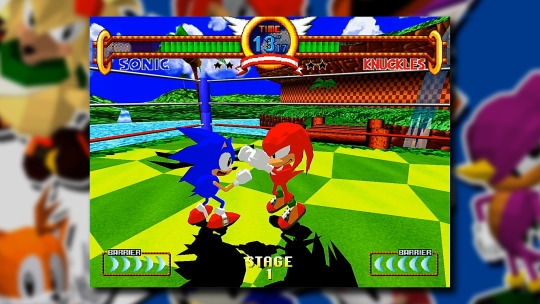
Sonic the Fighters
Sonic the Fighters, also known as Sonic Championship, is a 3D fighter released to arcades in 1996. The story goes that an unnamed developer put Sonic and Tails into the game Fighting Vipers, Yu Suzuki liked it so much he pitched the idea to SEGA as its own game.
The first 3D Sonic game, beating Sonic R by a year, and was meant to be a more family friendly version of AM2’s fighting games such as Virtua Fighter. The game’s story follows Sonic and friends as they compete against each other for the single-seat available on Tails’s rocket, with which the winner will take to Dr. Robotnik’s new Death Egg in order to stop his plan and be the hero.
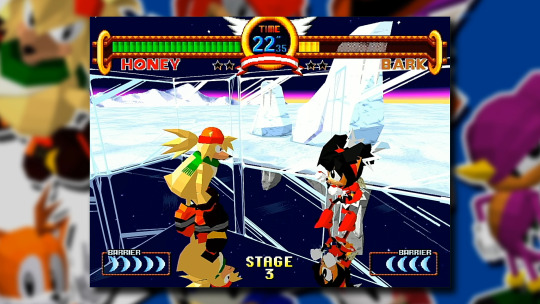
It was meant to be released on the Sega Saturn, but this port was canceled for unknown reasons. It would remain a hidden arcade gem until 2005 when it was released as part of Sonic Gems Collection. It was then released again in 2012 for PlayStation 3 and Xbox 360, possibly as a tie-in with the movie Wreck-It Ralph which features a Sonic Championship arcade cabinet.
The 2012 re-release is significant as it includes a secret playable character that was left unfinished. Honey the Cat can be used by highlighting Amy and pressing Start on the character select screen.

Sonic the Fighters may have gotten a boost in popularity with its re-releases and appearance in Wreck-It Ralph, but for the most part Sonic’s arcade history remains deeply obscure. While we focused mainly on the arcade games, there’s also prize redemption games, claw catchers, and pachinko-slot machines that haven’t been extensively documented.
Support Y2K FunZone on Patreon

#Sonic the Hedgehog#Sonic#Sonic Arcade#Arcade#Arcade Games#SegaSonic#SegaSonic the Hedgehog#Sega Genesis#Retro Gaming#Gaming#Video Games#Waku Waku Sonic Police Car#SegaSonic Bros#SegaSonic Popcorn Shop#SegaSonic Cosmo Fighter#Sonic the Fighters#Sonic Championship
0 notes
Text
Sonic 3 & Knuckles - 1994 Sega Genesis Retrospective
youtube
Sonic was big in the 90′s, but his biggest year was probably 1993. This was immediately after the success of Sonic 1 and 2, and right before the release of Sonic 3. Merchandise was flying off shelves, a popular long-running comic series got its start, and not one but two animated series premiered on American television. Of course let’s not forget two major Sonic games - Sonic CD and Sonic Spinball - launching in 1993.
All this hype lead up to the release of the third main series title in the Sonic the Hedgehog series - Sonic the Hedgehog 3 in February of 1994.

Sonic the Hedgehog 3 was released in 1994 as two separate games, Sonic 3 in February and Sonic & Knuckles in October. While most people see these as two separate games, most Sonic fans (and the developers) see it as two parts of one whole game. The game was supposed to launch in time for Christmas 1993, but due to unforeseen development troubles the game was split in half and delayed until February 1994.
The original idea for the game was that it was going to be a massive title easily four times the size of previous Sonic games, with larger stages and double the amount of levels, as well as three playable characters each with their own play-style and level paths. As development went on, it was decided the game would be too expensive to sell as one cartridge due to the game’s size.
Rather than cut content like they did previously with Sonic 2, the decision was made to split the game into two parts, with the latter release boasting “lock-on technology” that could combine the two games. This feature also allowed players to add Knuckles to Sonic 2, as well as unlock the game Blue Sphere when any other Genesis cartridge is inserted.
Sonic 3 has more story than the previous two games, with 3 being linked directly to the ending of 2. After the events of Sonic 2, Sonic and Tails decide to check out Angel Island where they’re met by an aggressive and territorial Knuckles the Echidna. Apparently Dr. Robotnik got to Angel Island first and told Knuckles that Sonic was after the Master Emerald, Angel Island’s best guarded secret.

While Knuckles focuses on antagonizing Sonic at every turn, Dr. Robotnik is free to establish a base on the island from where he can repair and launch the Death Egg. Eventually the battle between Dr. Robotnik and Sonic leads to the Hidden Palace, where Knuckles guards the Master Emerald, and Knuckles realizes that Robotnik is the one who’s been after the Master Emerald this whole time. Exhausted from all the fighting, Knuckles leads Sonic and Tails to the Sky Sanctuary where they can catch up with the launching Death Egg and stop Robotnik.
The story is pretty epic for a video game with no dialogue, written or otherwise. There aren’t any text bubbles, no voice actors, everything is expressed through body language. The cutscenes amount to little more than connective tissue between levels, save for the Hidden Palace Zone, but the story is easily understood by anyone playing the game.
Again, this is a two part game, so when Sonic 3 came out the marketing lead everyone to believe Knuckles was a villain. Through out the game itself he’s shown as a pest at every turn, never directly confronting Sonic, but always causing trouble behind the scenes. It wasn’t until Sonic & Knuckles came out that we discovered that Knuckles was manipulated by Dr. Robotnik, and that he’s actually a good guy who wants to protect his island.

Sonic has always been political, both Sonic 1 and 2 were about the discussion between environmentalism and industrialization. Sonic 3 presents a new discussion with Knuckles and Angel Island, that being a discussion on indigenous rights. Angel Island is a geographical anomaly because its a floating island, whatever causes it to float is what attracted Dr. Robotnik in the first place. Knuckles is the last of the Echidnas, a race of people who formerly habitated Angel Island but who’s numbers have since dwindled. Knuckles is the guardian of the plants and animals of Angel Island, as well as the Master Emerald.
This plot parallels a lot of real life situations where uncontacted people’s lives are disturbed by resource-hungry businesses. The Amazon rainforest, for example, has been controversial for decades as land developers lobby for the right to use the land and its resources for their personal gain, despite what or who might inhabit the land.
Gameplay-wise, Sonic 3 is an evolution of the formula established in Sonic 1 and expanded in Sonic 2. This time around the levels are bigger and there are more alternate paths to take, but for the most part the gameplay is the same. Now levels are designed around the characters, so each level has different paths that only specific characters can reach.
The music in Sonic 3 is some of the best the series has ever had, but of course there’s some controversy surrounding that. For Sonic 1 and 2 Sega had contracted Masato Nakamura of the Japanese pop group Dreams Come True. For Sonic 3 Sega decided they wanted a new sound, so they contracted Michael Jackson, who had worked with Sega previously on the game Michael Jackson’s Moonwalker.

I don’t want to spend too much time on this because it’s been covered to death, but the long and short of it is that Michael Jackson was contracted to work on Sonic 3 and then left the project before it really went anywhere. The official word is that Jackson wasn’t happy with the Genesis sound chip, but its hard to ignore the child sex abuse scandal that happened around the same time. Either way, Jackson left the project and his name was struck from the credits.
However, Sega still kept the songwriting team Jackson had assembled. Brad Buxer, Bobby Brooks, Darryl Ross, Geoff Grace, Doug Grigsby III, and Scirocco Jones are all credited for Sonic 3′s music, and each one had previously worked with Michael Jackson in some capacity. For Sonic & Knuckles, the second half of the game released later in the year, the songwriting team had all been replaced with Sega’s in-house musicians, with Howard Drossin getting the final credit.
Its commonly believed that Sega has been avoiding any sort of modern re-release or remake of Sonic 3 due to the rights to the music. Its well known that Sega can’t use the iconic music from Sonic 1 and 2 without paying royalties to Masato Nakamura, but its not known what the situation is with Sonic 3.
There are several possible theories, such as Michael Jackson’s estate charging too much for the rights to the music, or that Sega’s avoiding it because fans have pointed out blatant similarities between Michael Jackson songs and Sonic 3 songs. I personally believe its because Brad Buxor, one of the songwriters for Sonic 3, re-purposed The Jetzons’ song Hard Times for Ice Cap Zone.
Regardless of why, Sega has been reluctant to re-release Sonic 3 in any capacity. This is the part in the retrospective where I say I’ve been playing the definitive version of Sonic 3 for this video, the Christian Whitehead remake that was lovingly handcrafted to recreate the original experience for modern platforms. I’d like to say that, only it isn’t true, Whitehead was never allowed to remake Sonic 3 for whatever reason.

This isn’t for a lack of trying, however. The 2013 remake of Sonic 2 featured a newly added post credits scene that hints at the next game, and Whitehead even released a promotional video showing the Sonic 3 remake running, same as when he made a video promoting his Sonic CD remake concept. There’s been nothing but silence on Sega’s end, and even during production of Sonic Mania they were only cleared to use Hydrocity Zone late in development, outside of that there’s no Sonic 3 representation in Mania.
So if I’m not playing the Whitehead remaster, what version have I been playing? The closest thing to a definitive version we’ll ever get, a ROM hack called Sonic 3 Complete that combines both Sonic 3 and Sonic & Knuckles, giving the player the full complete experience. This fan-made ROM hack gives the player a suite of options to toggle, allowing them to set the game to their specific preferences. While it won’t amaze casual players, it’s a treat for die-hard fans of Sonic 3 and Sonic & Knuckles.
However, in the time since I began work on this video, a new remake of Sonic 3 has come out. A fan project called Sonic 3 Angel Island Revisited, or AIR, that attempts to recreate the whole Sonic 3 & Knuckles package in a manner similar to the Christian Whitehead remakes. The game supports native widescreen and is definitely worth checking out, though it requires a copy of Sonic 3 & Knuckles from Steam to play it.
Since 1994 Sonic 3 has been the quintessential Sonic experience. Some Sonic CD fans would dispute this, as its long been a debate with the community on which game is superior. I’m personally biased to Sonic 3, but both games are great so everybody wins.
Support Y2K FunZone on Patreon
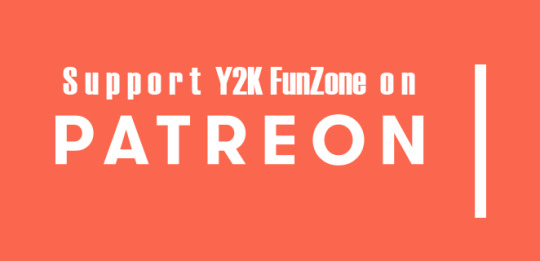
#Sonic the Hedgehog#Sonic the Hedgehog 3#Sonic#Sonic 3#Sonic & Knuckles#Knuckles#Knuckles the Echidna#Tails#Miles Tails Prower#Dr Robotnik#Dr Eggman#Sega#Sega Genesis#Sega Mega Drive#Sega Saturn#Sega Dreamcast#video games
0 notes
Text
Sonic Genesis Spin-Offs - Sonic Spinball/Dr Robotnik’s Mean Bean Machine
youtube
Spin-off!! Is there any word more thrilling to the human soul? When the popularity of Sonic the Hedgehog exploded following the release of the first game, Sega couldn’t move fast enough to put out the inevitable sequel. When the sequel proved that Sonic wasn’t a one-hit-wonder, Sega moved to make sure there would be more games in the coming years.
In 1993 Sega would drop two spin-offs to the Sonic the Hedgehog franchise, one a pinball game starring Sonic, and the other a reskin of the Japanese game Puyo Puyo featuring Dr. Robotnik. Both games would be produced by Sega of America and would feature characters and ideas from the two American Sonic cartoons airing at the time.

Sonic Spinball
Sonic Spinball was released in November of 1993 for the Sega Genesis, with ports being released for Game Gear and Master System. The game was developed by the Sega Technical Institute by an American-lead team, as the Japanese developers were busy working on the then-upcoming Sonic 3. The pinball sections of Sonic 2′s Casino Night level were highly praised at the time of the game’s release, which inspired the direction of Sonic Spinball.
The game’s a platformer that’s mostly played on pinball inspired stages, requiring the player to flip Sonic around to get where he needs to go. While there are moments where the player can walk around, most of the game happens while Sonic’s curled into a ball. The objective is to collect all the Chaos Emeralds in a stage and defeat stage’s boss in order to progress to the next stage.
Because this game was produced by Sega of America, they decided to tie the game in with the then-recent Sonic the Hedgehog Saturday morning cartoon. While the Robotnik depicted in the game matches his Japanese design, his robot sidekick Cluck from the Saturday morning cartoon appears as an obstacle in the first stage. Sonic’s friends Sally, Rotor, Bunnie appear as trapped animals in one of the bonus games, the first and only time the Freedom Fighters would appear in a game (outside of archival materials in compilations).
Spinball is a fun game with a unique premise that did its job well: hold the fans over until Sonic 3 comes out. The game can be a bit difficult and levels take longer to beat than in standard Sonic games, but the challenge was worth it and rarely felt cheap. Seeing the characters from the comics and cartoons was really cool too.

Dr. Robotnik’s Mean Bean Machine
Dr. Robotnik’s Mean Bean Machine was released in December of 1993 for the Sega Genesis, and again had ports for both the Game Gear and Master System. Unlike Sonic Spinball, which was wholly original, Mean Bean Machine is actually a reskin of the Japanese puzzle game Puyo Puyo. The game was likely changed due to the Puyo Puyo characters being too anime at a time before anime had become popular in the United States.
The game’s design was inspired by the first episode of the Adventures of Sonic the Hedgehog cartoon. Sonic and Tails don’t appear or get any sort of mention, but Dr. Robotnik and his goofy robot sidekicks Scratch and Grounder (who likely inspired the later Orbot and Cubot) appear in the opening cutscene and as opponents in the game.
The game holds a special legacy among Sonic fans, and would be a Western exclusive game until the Sega Puzzle Pack PC collection was released in Japan as Sega Archives from USA Vol. 2 in 2000. The game likely wasn’t released in Japan initially as the Dr. Robotnik name and design wouldn’t resonate with Japanese fans who knew him as Eggman.
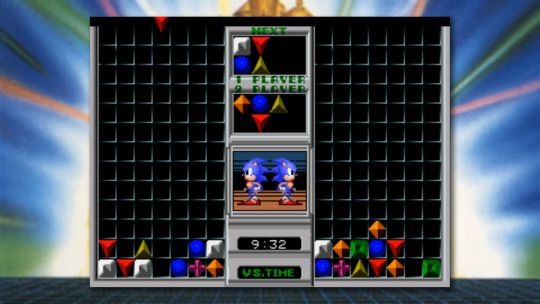
Sonic Eraser
Sonic wasn’t as big a hit in Japan as he was in North America and Europe, which is likely why these spin-offs were made by Sega of America. Of course, the Japanese would get their own spin-off with Sonic Eraser. Eraser was among the first downloadable games available on a home console, thanks to the Mega Drive Modem which was only ever available in Japan.
For a brief period after the Mega Drive’s Japanese launch, Sega offered a modem that one could attach to their system and using a cartridge called the Sega Game Library they could download games from the internet. Some games like Flicky and Columns would go on to see full retail releases, but exclusives like Sonic Eraser would be forgotten for years. In 2004 Sega offered an emulation service to their Japanese customers, which is how Western founds eventually discovered the game.
The game is a simple rotating blocks puzzle game that features two Sonics competing head to head. The game can be played single player against a computer, or two-player with a friend. During matches when one player makes a good move against the other, a short animation featuring their Sonic punching the other Sonic would play. As a puzzle game it wasn’t very impressive, and the Sonic license seems to be slapped on in a less impressive fashion than Dr. Robotnik’s Mean Bean Machine.
As time went on we’d see Sonic and friends in other spin-off titles, typically games that could feature any mascot character and you wouldn’t know the difference. It wouldn’t be long before Sonic starred in a racing game, leading many fans to ask “Why does Sonic need to drive a car?” I guess that’s a mystery we’ll have to solve next time.
Support Y2K FunZone on Patreon

#Sonic the Hedgehog#Sonic#Sonic Spinball#Dr Robotnik's Mean Bean Machine#Sonic Eraser#Every Sonic Ever#Sega Genesis
0 notes
Text
Dragon Ball: Revenge of King Piccolo - 2009 Wii Retrospective
youtube
Dragon Ball video games almost always focus on the more action packed later part of the series, with very few games coming out that focus on the original Dragon Ball. While there’s endless potential for fighting games based on the later story arcs, the early stories can make for a variety of different play styles including RPGs and platformers.
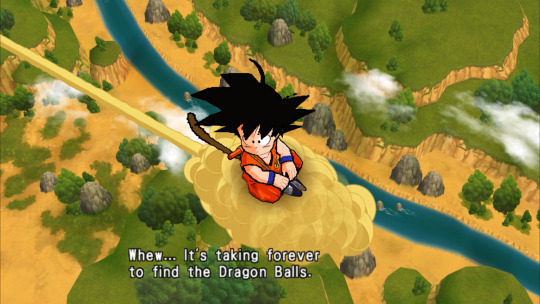
Revenge of King Piccolo was released exclusively on the Wii in 2009, a side scrolling platformer beat ‘em up with RPG elements. The game was released around the same time as the Dragon Ball Origins DS games, but it has more in common with the 2004 GameBoy Advance title Dragon Ball Advanced Adventure.
The game takes place between the middle and end of Dragon Ball, starting with the Red Ribbon Army saga and ending with the fight with King Piccolo. This part of the story is interesting because it’s the period where Dragon Ball went from adventure manga to straight up fighting. This is reflected in the gameplay, as the first half of the game features extensive platforming stages while the latter half of the game is mostly boss battles.
The story is represented by visual novel style dialogue boxes with character images and fully animated CG cutscenes. The game takes place over the span of 8 volumes of the manga, and it retells the story with enough detail that you can follow the game without having read the manga or seen the anime. As with all licensed games, a basic familiarity with the property is all you need to play.

What separates this game from other Dragon Ball console games is that it’s an adventure game rather than a fighting game, though there are some fighting elements. The gameplay feels like a classic 90’s side-scrolling platformer, with stages that switch between exploration with multiple paths and spots where waves of enemies will attack. The combat system feels like any classic arcade beat-em up, simple but with enough depth not to feel too repetitive, even when it is.
Each story-arc is broken up into several stages and boss fights, with the last three story-arcs being made solely of boss fights. While this makes sense when trying to stay accurate to the story, as again this is the point in the series when the focus switched from adventure to fighting, it feels sort of lazy. It’s hard to defend it when some of the platforming stages don’t appear in the series at all.
The battle system is enjoyable enough that the boss fights aren’t a chore, and the World Tournament story arc acts as an introduction to the game’s multiplayer mode. The bosses are challenging enough that they make up for the lack of platforming stages.

The World Tournament mode, however, is a bit odd as the time limit seems to work against the slower pace of this game’s fights. While it’s cool to be able to play with your friends and use characters other than Goku, you’ll find that there’s not enough time to build up the special gauge. The rounds timed out for me more often than I knocked out my opponents.
Unlocking characters for World Tournament mode means finding all the collectibles in the platforming stages, as well as clearing levels with S ranks. The game’s on the short side, I was able to beat it in around 7 hours, and it can be completed 100% in 16 hours. It’s not a particularly challenging game, but it is a lot of fun and it’s a breath of fresh air in a franchise that’s known primarily for fighting games.
Dragon Ball Revenge of King Piccolo is a great game that I would say is among the best Wii games. I would love to see Bandai Namco remaster this game in HD, as you can see by the footage I played this game in Dolphin and up-rezzing the graphics gives the characters weird blocky outlines. Ignoring that, this game looks absolutely gorgeous and would look even better with a slight HD makeover.
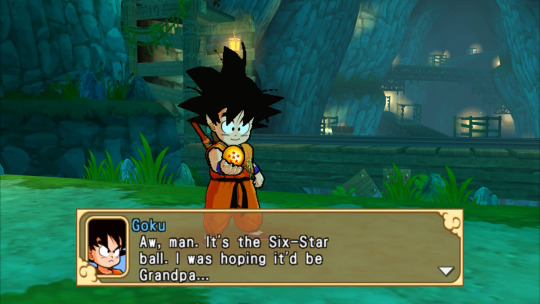
Where to Buy
Dragon Ball: Revenge of King Piccolo (Wii)
Support Y2K FunZone on Patreon

#Dragon Ball#Dragon Ball Z#Dragon Ball GT#Wii#Nintendo#Namco Bandai#Bandai#Revenge of King Piccolo#Goku#Piccolo#Red Ribbon Army
0 notes
Text
Sonic CD - 1993 Sega CD Retrospective
youtube
If you ask any fan where Sega dropped the ball in the 90′s you’ll get a variety of answers, but the most common one would be add-ons. For some weird reason Sega was obsessed with producing add-on peripherals for the Sega Genesis. From a marketing stand point it made sense, why buy a new console entirely when you can buy a cheaper add-on to give your current console a bump in power?
That was the thinking with the Sega CD, a disc-based add-on that could offer new experiences to Genesis owners. It could play your favorite music CDs, which made it more attractive to Genesis owners, as well as play games that utilize full motion video, voice acting, and CD quality music. The Sega CD would have a very limited library of exclusive games, but buried among them was one of the best Sonic the Hedgehog games of all time.

Sonic CD launched in 1993 exclusively for the Sega CD, featuring animated cutscenes by Toei Animation and an immersive CD quality soundtrack. Due to the cost of buying a Sega Genesis, a Sega CD add-on, and Sonic CD itself the game was out of reach to many gamers. Its received a few re-releases over the years, including a PC port in 1996, a PS2/Gamecube port in 2005, and a remake in 2011 for PS3, Xbox 360, PC, and mobile platforms.
After production on Sonic the Hedgehog finished in 1991, the original Sonic Team split in two with one half going to the US to work on Sonic the Hedgehog 2, and with the other staying in Japan and working on Sonic CD. Yuji Naka, lead programmer and co-creator of Sonic went to America, while Naoto Ohshima stayed behind in Japan. Initially, CD was meant to be an expanded version of Sonic 2, similar to Ecco the Dolphin and Earthworm Jim’s Sega CD releases.
While Sonic 2 would be a more standard evolution of the concepts defined in Sonic 1, Sonic CD took a different, more experimental route. The game features a time travel system where Sonic can go to the past or future of any stage. Each stage has four different time periods: the Present, the Past, the Good Future, and the Bad Future. To unlock a Good Future in a stage you have to go to the Past and find Dr. Robotnik’s machine and destroy it. Unlocking Good Futures will let you unlock the good ending.

Each stage has its own particular gimmick or type of obstacle to overcome, they can be frustrating at first but once you understand how they work the levels are easy. Due to the time travel mechanic, exploration is more important in Sonic CD than other games. Levels are designed to be explored, with various secrets to find while searching for Robotnik’s machines.
The special stages are unique in that they’re similar to Mode 7 games for the Super Nintendo like F-Zero or Super Mario Kart. Mode 7 was a feature the Super Nintendo had that could scale and rotate images to create a pseudo-3D effect. The Sega Genesis isn’t capable of that, but the Sega CD is, so Sonic CD’s special stages were a great way to demonstrate the Sega CD’s powers.

As with the retrospectives of Sonic 1 and 2, the version of Sonic CD played here was the 2011 Christian Whitehead remake. Sonic CD was Whitehead’s first project for Sega, they hired him to remake Sonic CD for mobile devices after he posted a tech-demo on YouTube of the game running on an iPhone. As Whitehead’s first professional project, Sonic CD is an absolute masterpiece. The remake is akin to a well-done restoration of a famous painting, its so perfect that you don’t even notice its not exactly the original work.
You might, however, notice that Tails becomes a playable character after you beat the game once. Tails was not in the original game, so this was a welcome new addition to the package. This would be the first of many “little touches” that Whitehead added to his remakes of the classic games.
Sonic CD is a divisive game, some fans love it while others hate it, but for me it was more of a lost treasure. Now its available to anyone with a cell phone or a PC, but back in the day it was a game few people owned, again because of how expensive it was. Playing it today, its satisfying because I wasn’t able to play it when it was new.

As a departing thought, I’d like to mention that I played the PC version as a kid and would always get really sad when Metal Sonic kidnaps Amy at the start of the second level. Its comforting, as an adult, to beat the game and discover that things work out for her. She’s living her best life, and that’s all any of us could ask.
Where to Buy
Sonic CD (Android)
Support Y2K FunZone on Patreon

#Sonic the Hedgehog#Sonic#Sonic CD#Amy Rose#Metal Sonic#Dr Robotnik#Dr Eggman#Christian Whitehead#Sonic Mania#Sonic the Hedgehog 2#Sonic the Hedgehog 3#Sonic & Knuckles#Sega Genesis#Sega CD#Sega 32X#Sega Saturn#Sega Dreamcast#Video Games
1 note
·
View note
Text
Sonic Handheld Games - Part 1
youtube
There’s an era of Sonic the Hedgehog history that’s often overlooked, despite occurring at the height of Sonic’s popularity. Through out the 90′s Sega released a series of original Sonic the Hedgehog titles made specifically for Sega’s handheld Game Gear, some of which were ported to the Master System.
These games were released alongside their Sega Genesis counterparts, but weren’t watered down ports. Instead these were completely original games that played to the strengths of Sega’s 8-bit systems. For a lot of people, especially in markets where the Master System dominated, these were the definitive Sonic games.

Sonic the Hedgehog
Sonic the Hedgehog was released for the Master System and Game Gear in October of 1991, several months after the release of the Genesis version. While the two titles share the same name and several stages, they’re two separate games entirely. The 8-bit version lacks a lot of the graphical flourishes of the 16-bit version, but accurately recreates the gameplay and physics to a degree.
The game is slower-paced than the Genesis version, with a higher focus on platforming rather than speed. While there are special stages in this version, the Chaos Emeralds are found in the stages themselves. Special stages offer the player the chance to rack up lives and continues, which are desperately needed as this game can be unforgiving.
As a side note, the music from the stage Bridge Zone may have been the inspiration for the 2001 Janet Jackson song Together Again. This wouldn’t be the first time a member of the Jackson family was tangled with Sonic the Hedgehog, as Michael Jackson famously agreed to compose the soundtrack for Sonic 3 only to be let go in the face of allegations of sexual misconduct.
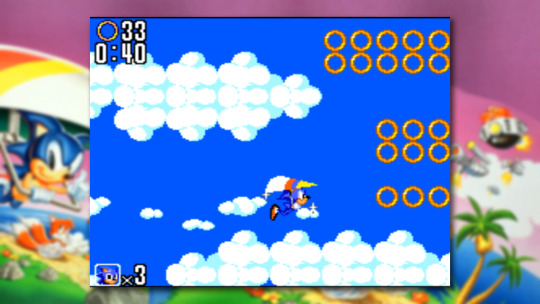
Sonic the Hedgehog 2
Sonic the Hedgehog 2 was released in 1992 on Master System and Game Gear, alongside its Genesis counterpart. While the first 8-bit Sonic game had a slight resemblance to the 16-bit version, this one is practically its own game entirely. While the Genesis version was marketed entirely around the inclusion of Tails as a playable character, he’s nearly completely absent from the Game Gear and Master System versions.
The game opens with a cutscene featuring Tails being kidnapped by Robotnik, setting up the story of the game. Each level begins with a title card that features Tails alongside Sonic, but the game is a solo venture for the blue hedgehog. If you don’t beat the game with all of the Chaos Emeralds you get a bad ending where Sonic looks up in the sky to see Tails in a constellation of stars, implying Sonic’s failure lead to his demise.
Another silly piece of music trivia, the music from the stage Green Hills Zone was re-purposed as “Sonic - You Can Do Anything” in the Japanese and European versions of Sonic CD. Both games share the same composer - Naofumi Hataya.

Sonic Chaos
Sonic Chaos, or Sonic & Tails in Japan, was released in 1993 for the Master System and Game Gear. By 1993 Sega had thrown the branding convention out the window and decided the next 8-bit Sonic game would stand on its own. Chaos launched alongside Sonic CD, establishing the handheld titles as separate from the titles they’re commonly released with.
Correcting the errors of the previous game and living up to its Japanese title, Sonic Chaos finally allows you to play as Tails in an 8-bit game. It also includes the Spin Dash, which both previous titles lacked, and the Super Peel-Out which was introduced in Sonic CD.
Chaos also changes things by introducing a completely different art style than previous games. Instead of everything looking flat, now everything has an almost 3D pop to it. This was likely to imitate what could be done on the Genesis hardware, as by 1993 the Master System was already long past its expiration date in North America and Japan.
While the focus of this was supposed to be on “handheld” Sonic games, I actually played the Master System versions of the games for a few reasons. Namely the Master System offers a slightly higher resolution than the Game Gear, resulting in more screen area. The games are largely the same between the two, but I felt it was important to point this out.
It may seem like the console titles are the most important Sonic games, but we’ll see that the handheld lineage can be just as strong.
Where to Buy
Sonic the Hedgehog (8-bit) (Game Gear, Master System)
Sonic the Hedgehog 2 (8-bit) (Game Gear, Master System)
Sonic Chaos (Game Gear, Master System)
Support Y2K FunZone on Patreon

#sonic the hedgehog#sonic the hedgehog 2#sonic chaos#sonic game gear#sonic master system#game gear#master system#Every Sonic Ever
1 note
·
View note
Text
Sonic the Hedgehog 2 - 1992 Sega Genesis Retrospective
youtube
After the wild success of Sonic the Hedgehog in the Summer of 1991, Sega decided to cash in on their hot new property. Plush toys, arcade games, and of course a sequel would all come out within the next year. When Sonic 1 was completed the original Sonic Team was split up with Yuji Naka and others going to San Francisco to make Sonic 2 at the Sega Technical Institute, while Naoto Ohshima stayed behind and worked on a Sonic project for the upcoming Mega CD add-on.
Sonic the Hedgehog 2 was released in November of 1992 to greater fanfare than the previous game, establishing Sonic the Hedgehog as an icon among video game characters.

While Sonic 1 revolutionized the physics of speed and momentum in gaming, Sonic 2 expanded on the original while adding the new spindash move, as well as the addition of Tails as a second player character. With two leading characters, a multiplayer mode was now possible allowing for a second player to control Tails in the main game, and a competition mode where you could race against a friend.
The game was built on an upgraded version of the first game’s engine, and during development the plan was more ambitious than the final result, which doesn’t stray too far from the first game. The original idea was for Sonic 2 to feature a time travel storyline, similar to the one in Sonic CD. Several levels were scrapped from the final game, such as Wood Zone and Hidden Palace Zone.
In the late 90′s, a vastly different beta version of Sonic 2 was discovered on a Chinese fan-site, this version was a prototype stolen from toy show where Sega were demonstrating the game. This Sonic 2 prototype featured levels, assets, and character sprites that weren’t found in the final game. For years fans have studied and documented the development of Sonic 2 as one of gaming’s great mysteries, mostly due to the various prototypes that have popped up over time.
While the final game might not meet the scope the developers originally had in mind, its no doubt still a fantastic game and is probably better off as it is. The game has a great sense of pacing, never keeping you in a stage for longer than you need to be there. Each level has its own themes which expand on the ideas of “environmentalism vs. industrialization” established in the first game, with the progression of levels showing Sonic’s world go from lush and green to dank and oily.

The first Sonic was a colorful game, but in comparison to Sonic 2 it looks downright grey. Sonic 2 has a bright, wonderful color palette that makes every setting come alive. The character animations feel like a significant upgrade to the set used in Sonic 1, which were re-used in Sonic CD.
Sonic 2, in a way, feels almost like a do-over of Sonic 1. There’s more levels, but the levels have direct parallels to those from Sonic 1, or (in the case of Hill Top Zone) are recolored, rearranged versions of other Sonic 2 stages. The addition of Tails as a sidekick character who follows Sonic and can be controlled by a second player was iconic, and has since become a staple of the franchise.
Sonic 2 is an important game that holds up well compared to other games of its era, and its certainly more than just a cosmetic upgrade of the first game, but I’ve noticed that each Sonic game in the classic franchise is an improvement over the previous game. Each game stands alone on it’s own merits, but when looked at together they show a steady rise in quality as the years go by.
For this retrospective, as with the Sonic 1 retrospective, I played the 2013 remake by Christian Whitehead and Simon Thomley. To me, this is the definitive Sonic 2 experience, as with Sonic 1 and Sonic CD. Using Whitehead’s Retro Engine, they were able to successfully recreate Sonic 1, 2, and CD for modern platforms. These releases would eventually lead to the development of Sonic Mania, the first original “classic style” Sonic the Hedgehog game since 1994.
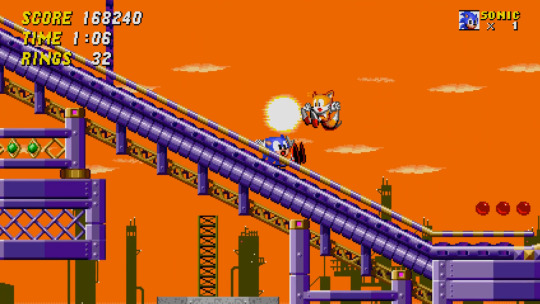
A notable easter egg included with this version of Sonic 2, and only this version, is the inclusion of the Hidden Palace Zone as a fully realized stage with an original boss. As mentioned earlier, the Hidden Palace Zone was found partially playable in one of the Sonic 2 prototypes, and it became somewhat of a legend among the fan community. The idea behind the level was re-purposed for Sonic & Knuckles, but for Sonic 2 players on mobile devices the level was recreated with the original assets and is only accessible by falling into the infamous spike pit in Mystic Cave Zone.
Sonic the Hedgehog 2 is a great game that still holds up well nearly 30 years later. Its unfortunate that the definitive version of the game has been stuck on mobile devices, for some reason Sega has been reluctant to port the Sonic 1 and 2 remakes to any new consoles or devices. But, hey, guess they don’t want our money!
Where to Buy
Sonic the Hedgehog 2 (Android)
Support Y2K FunZone on Patreon

#sonic the hedgehog 2#sonic#sonic the hedgehog#tails#miles tails prower#sega genesis#sega#sega mega drive#sonic mania
1 note
·
View note
Text
Sonic the Hedgehog - 1991 Sega Genesis Retrospective
youtube
Pop culture in the 90′s was synonymous with the term “edgy”, which as a marketing buzzword meant something not entirely inoffensive, but also didn’t cross the line. Bart Simpson, Beavis and Butt-Head, and Sonic the Hedgehog were seen as “edgy” icons to rival the boring, stoic characters of the 80′s. Though Sonic was never portrayed doing anything explicitly illegal or immoral, his anti-authoritarian attitude resonated with the rebellious side of kids.
What was Sonic rebelling against? Marketing-wise, it was Nintendo’s dominance on the video game industry. Following the video game market crash of 1983, Nintendo launched the Nintendo Entertainment System and with it came explicit policies for developers that restricted the content in video games, how many titles a publisher could release in a year, and developers had to agree not to make games for other platforms. This made it difficult for companies like Sega to compete, as it gave Nintendo a near-monopoly on the industry.
If Sega couldn’t get the best third party developers to make games for their platform, they decided they would have to do it themselves. After an internal competition to create a mascot to rival Nintendo’s Mario, Sonic the Hedgehog would be released in 1991. The game came bundled with the Sega Genesis in North America, resulting in a massive spike in sales of the console. Sega had given Nintendo a run for their money in a big bad way.
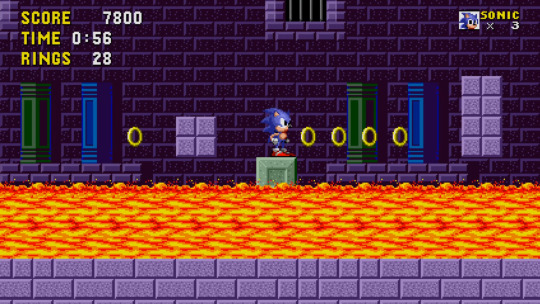
In the same way that Mario revolutionized the platformer in the 8-bit era, Sonic revolutionized speed and momentum. The opening stage shows this with it’s level design, which encourages the player to build up speed and maintain momentum while dodging obstacles. The branching paths also gave the player incentive to explore the world and uncover its secrets, whether it be hidden items or shortcuts to help finish stages faster.
Sonic 1 is a game I usually skip when I play through the older games, it’s not that I don’t like the game, I just feel the later ones improve upon the formula. It was fun to be able to see the game through to the end, there were a lot of things I’d forgotten about that were fun to see. Since I don’t have the stages memorized like I do with later titles, there was a good amount of challenge that was fresh to me. While I did talk about Sonic 1 as part of The Return of Classic Sonic, that was more a sampling of the Android version of the game than a real review of the game itself.
The version of the game I played for this review is the same Android version, the 2013 mobile remake by Christian Whitehead made with the Retro Engine. To me this is the definitive experience, and it’s unfortunate that Sega has yet to release it on non-mobile platforms, despite releasing several different ports of Sonic 1 since 2013.
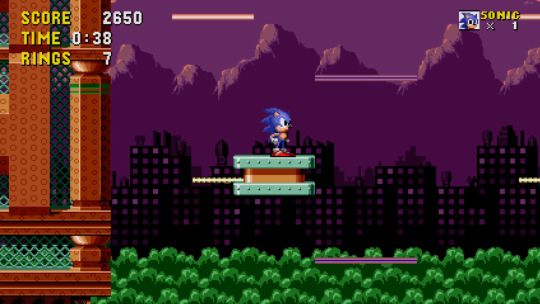
I was able to play Sonic the Hedgehog on my PC using the NoxPlayer 6 Android emulator. NoxPlayer allows users to map touch screen controls to their device of choice such as a gamepad. Being able to play a mobile-only game on my PC with my personal controller is a great feeling, especially as its unlikely this game will be coming to consoles any time soon.
Its hard to look at Sonic the Hedgehog for what it is without thinking about everything that came after, especially since this version includes the spindash which wasn’t introduced until the sequel (this is optional, however). There was a brief moment in history where Sonic was nothing more than a hedgehog fighting an evil scientist.
With that in mind, I was able to notice the pretty obvious environmental message behind Sonic the Hedgehog. The game is about the evil Dr. Robotnik who kidnaps little animals to fuel his robot army, which he uses in order to industrialize nature. Sonic isn’t a hero trying to save the day, he’s an every-man who’s just trying to protect his homeland and it’s fellow inhabitants.
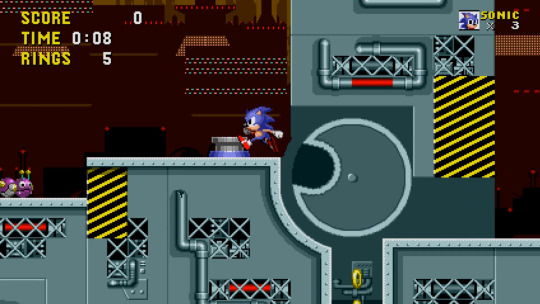
The video game heroes that came before Sonic all had implied goals in mind, specifically when the hero had to rescue a princess. Sonic wasn’t like that, Sonic wasn’t about saving the princess so he could get a kiss, and I think that’s another thing that set Sonic apart. The games that came before Sonic were based on or inspired by fairy tails, literature, and dated character archetypes, things we’ve all heard before.
Sonic the Hedgehog came at a time where it was needed most, a game that could mimic realistic pinball physics while introducing an iconic character. The 90′s would see dozens of games try to mimic the success of Sonic, but few have come close.
Where to Buy
Sonic the Hedgehog (Android)
Support Y2K FunZone on Patreon
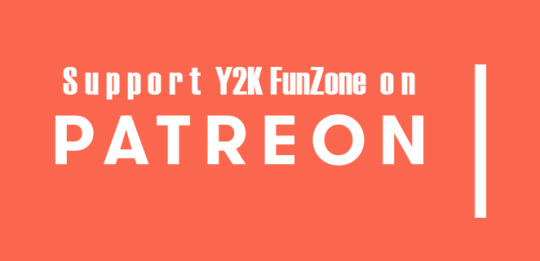
0 notes